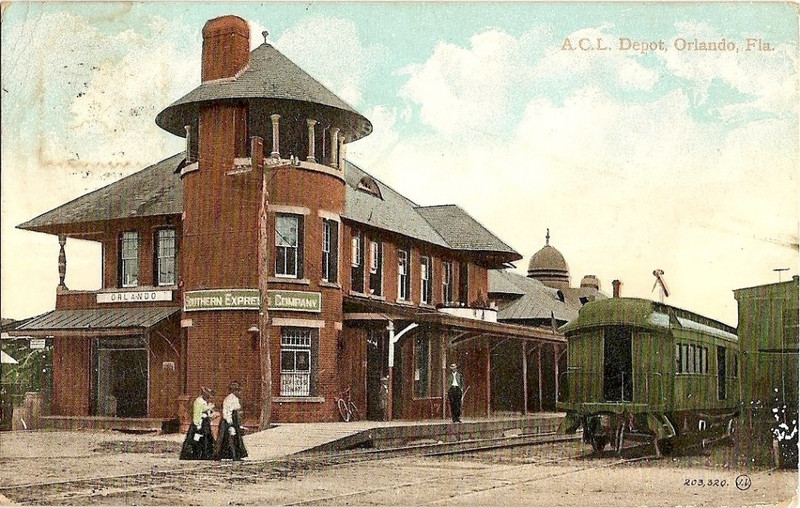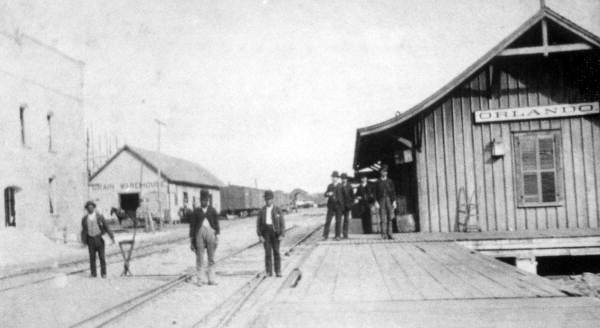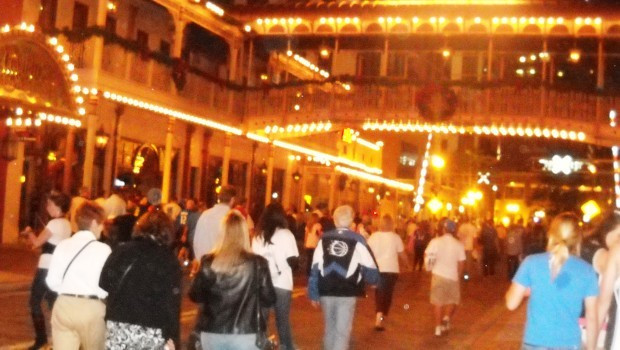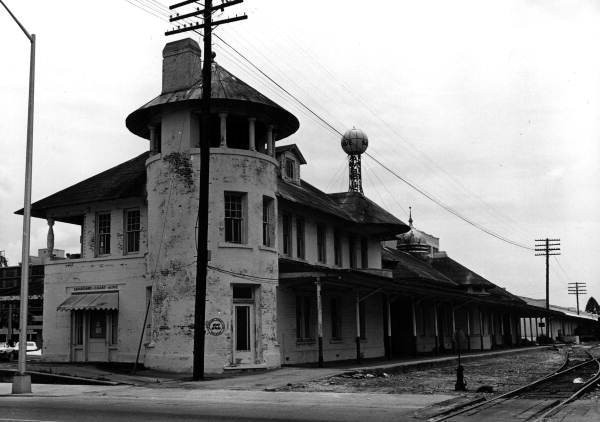Orlando, Florida, now famed for its theme parks and tourism, began as a humble cattle trading post. By 1889, when the Church Street Station, originally known as the Old Orlando Railroad Depot, was built by the South Florida Railroad, the city had transformed into a citrus empire and a sought-after destination for those seeking respite from rheumatic ailments. Located at 4 Depot Place and West Church Street, this iconic structure replaced a smaller wooden depot from 1880, which first connected Orlando to Sanford, a vital port for steamboat travel to Jacksonville and beyond. The early days of rail travel in Orlando were intimately linked with figures like Joseph Bumby, a prominent businessman and citrus grower, who owned the warehouse across from the depot where tickets were initially sold.
 Atlantic Coast Line Depot, late 19th century.
Atlantic Coast Line Depot, late 19th century.
The Dawn of Rail in Orlando: Connecting to the South Florida Railroad
The vision of Henry Shelton Sanford, a key figure in Central Florida’s development, fueled the establishment of the South Florida Railroad. Groundbreaking ceremonies in Sanford on January 10, 1880, marked the beginning of this transformative project. Notably, former President Ulysses S. Grant, a friend of Sanford, participated by turning the first shovel of soil. By October 1, 1880, the 23-mile line was operational. The very next day, a celebratory train, consisting of flat cars fitted with wooden benches, embarked on its inaugural journey to Orlando. Overcrowded with excited passengers, the train faced several stalls along the way, punctuated by the firing of a cannon mounted on the last car. Upon arrival in Orlando, a grand barbecue awaited, with tables set up for all attendees, including the African-American workers who played a crucial role in constructing the railway line.
 Built in 1880, the first Orlando Station only connected Orlando and Sanford.
Built in 1880, the first Orlando Station only connected Orlando and Sanford.
Growth Spurs a New Station: The Brick Landmark Rises
The arrival of the railroad acted as a catalyst for Orlando’s rapid expansion. In just four years following the railway’s inception, Orlando transformed from a small settlement of around 200 residents and a handful of buildings into a burgeoning town with a population of 1,666 and over 40 commercial establishments by 1884. This growth, coupled with the flourishing citrus industry, necessitated a larger, more permanent railway station. Consequently, the original wooden structure was replaced in 1889 by the brick Church Street Station that stands today. The South Florida Railroad itself extended its reach in 1882, connecting Sanford to Kissimmee. In 1883, Henry Plant acquired the line, incorporating it into his Plant System, a vast network of railroads, steamships, and hotels across the southeastern United States. The Plant System was eventually purchased by the Atlantic Coast Line (ACL) Railroad Company in 1902, further solidifying the region’s railway network.
A Union Station in Orlando: Serving Multiple Lines
By the time Church Street Station was rebuilt, Orlando was already served by two additional railway lines: the Tavares, Orlando and Atlantic (TO&A) Railroad and the Orlando and Winter Park Railway. Historical Sanborn Insurance maps refer to the station as a “Union Station,” suggesting that it likely accommodated services from at least one, if not both, of these lines. Union Stations arose from agreements between multiple railroad companies to share facilities, streamlining operations and conserving space, a concept encouraged by city administrations to manage urban development.
From Railway Hub to Entertainment Destination: Church Street Station’s Evolution
As Orlando continued to expand, Church Street Station eventually became insufficient to handle the increasing volume of passengers and trade. In 1926, the ACL relocated its depot functions to the Orlando station, which later became the Orlando Health/Amtrak Station. Church Street Station continued to operate as a ticket office, but by the 1970s, it had largely fallen into disuse. However, in 1972, entrepreneur Bob Snow purchased the station and surrounding buildings, envisioning a downtown Orlando entertainment and shopping complex. This marked a turning point for the station, and in 1976, it was officially recognized for its historical significance with its addition to the U.S. National Register of Historic Places.
By 1985, Church Street Station had transformed into a major tourist magnet, employing 900 individuals and attracting 1.7 million visitors annually. It became the fourth-largest tourist attraction in Florida, rivaling giants like Walt Disney World Resort, SeaWorld Orlando, and Busch Gardens. Despite its early success, Snow sold his interests in the late 1980s, and the complex faced financial difficulties in the 1990s. Boy band mogul Lou Pearlman acquired a majority stake in 2002, but his own financial troubles led to foreclosure in 2007, allowing developer Cameron Kuhn to purchase the property. In 2008, Church Street Station was reopened after renovations, welcoming new retail outlets, restaurants, and nightclubs. In 2014, the station regained its transportation role when SunRail commuter rail service began operating, with its platform situated adjacent to the historic depot.
 Church Street Station's shopping and entertainment complex in 2013.
Church Street Station's shopping and entertainment complex in 2013.
Church Street Station Today: A Blend of History and Modernity
Church Street Station in Orlando stands as a testament to the city’s dynamic history. From its origins as a simple wooden depot facilitating citrus trade and passenger travel, to its grander brick structure symbolizing Orlando’s growth, and its later transformation into a vibrant entertainment complex, the station has continually adapted to the changing times. Today, as a stop on the SunRail commuter line and a beautifully preserved historic landmark, Church Street Station continues to serve as a vital link to Orlando’s past while remaining relevant to its present and future.

 The station in the mid-1970s, after years of neglect, right before the economic boom brought on by entrepreneur Bob Snow.
The station in the mid-1970s, after years of neglect, right before the economic boom brought on by entrepreneur Bob Snow. In 2007, after a number of renovations, the depot appears almost identical to when it was built in 1889.
In 2007, after a number of renovations, the depot appears almost identical to when it was built in 1889.